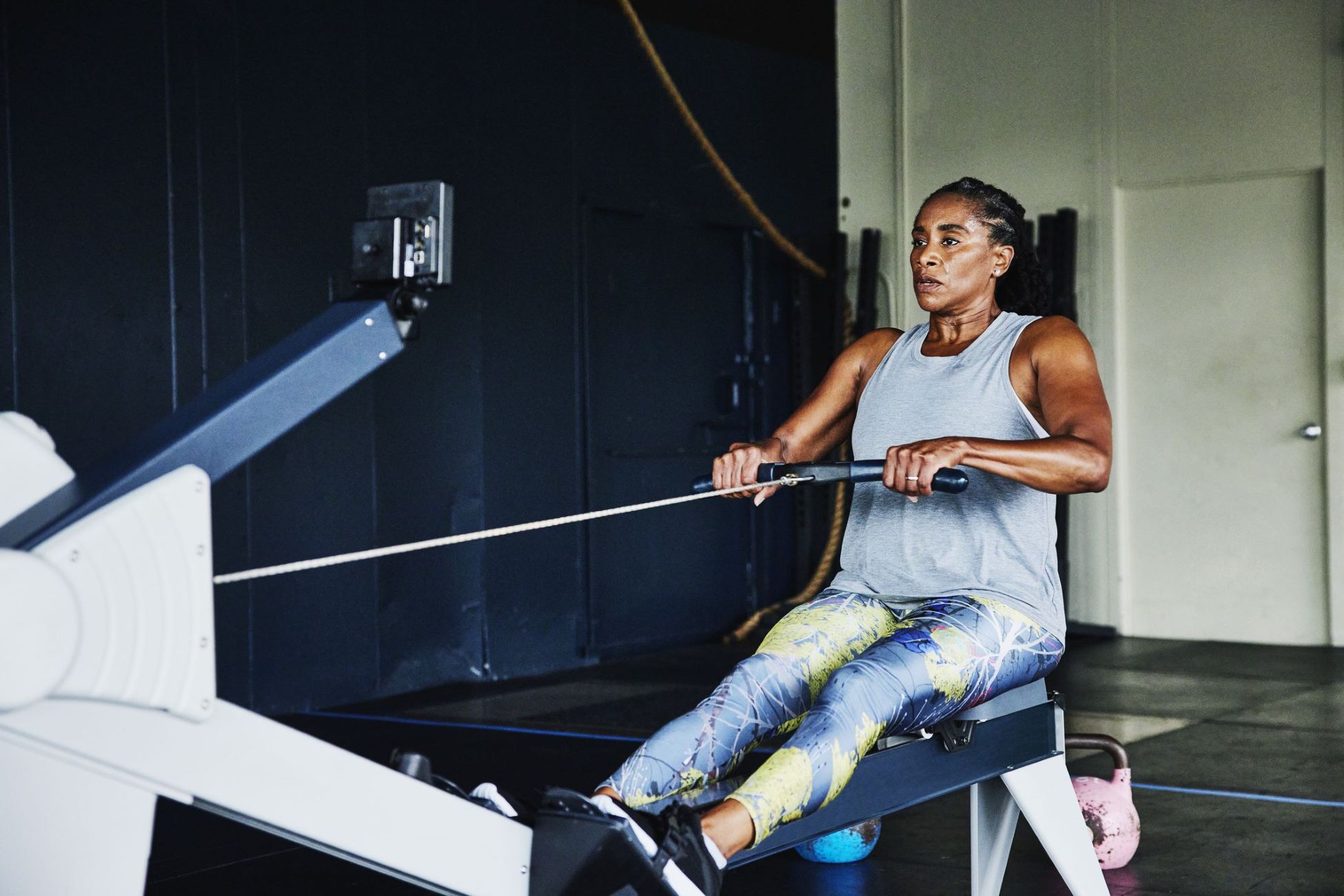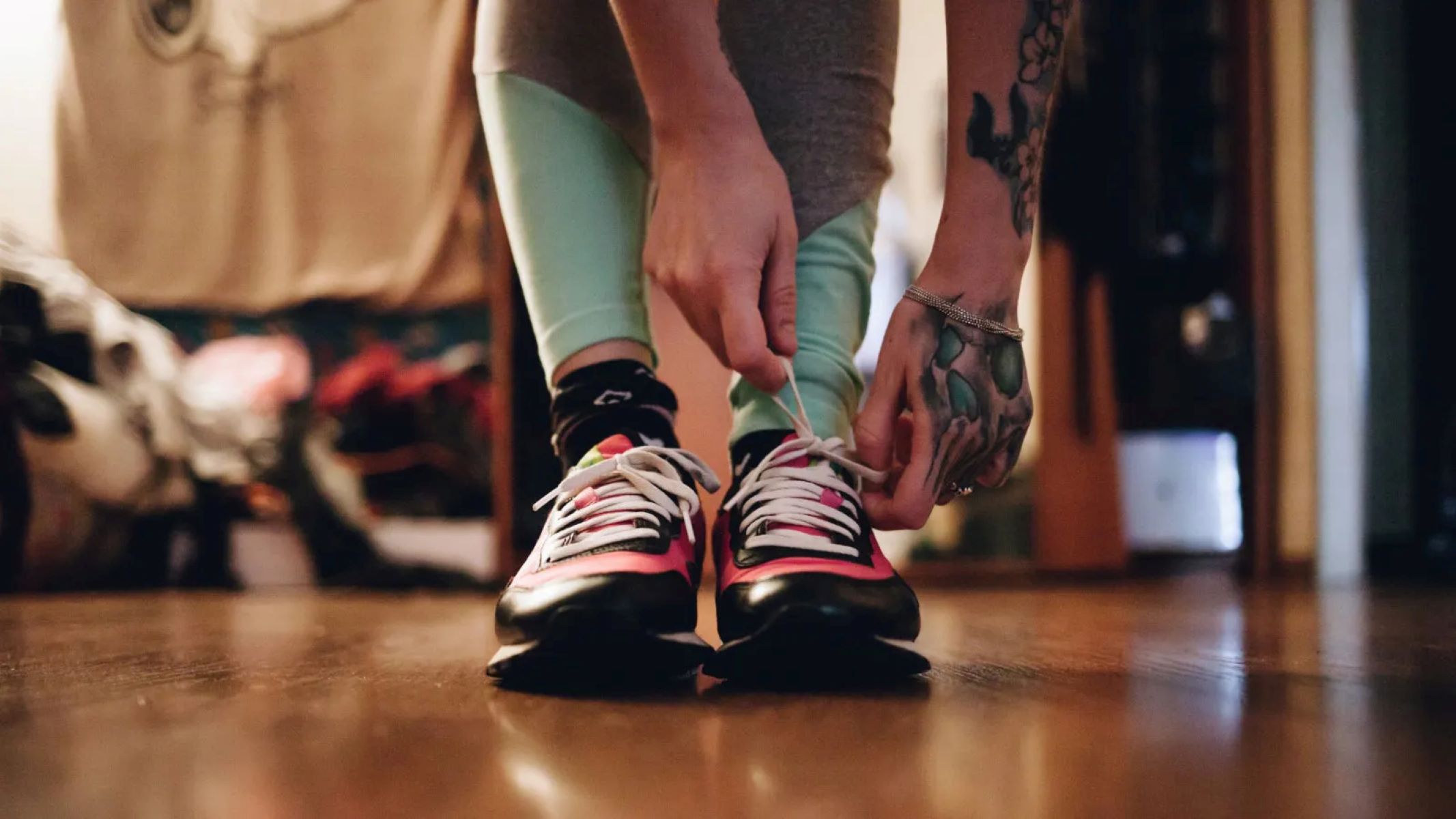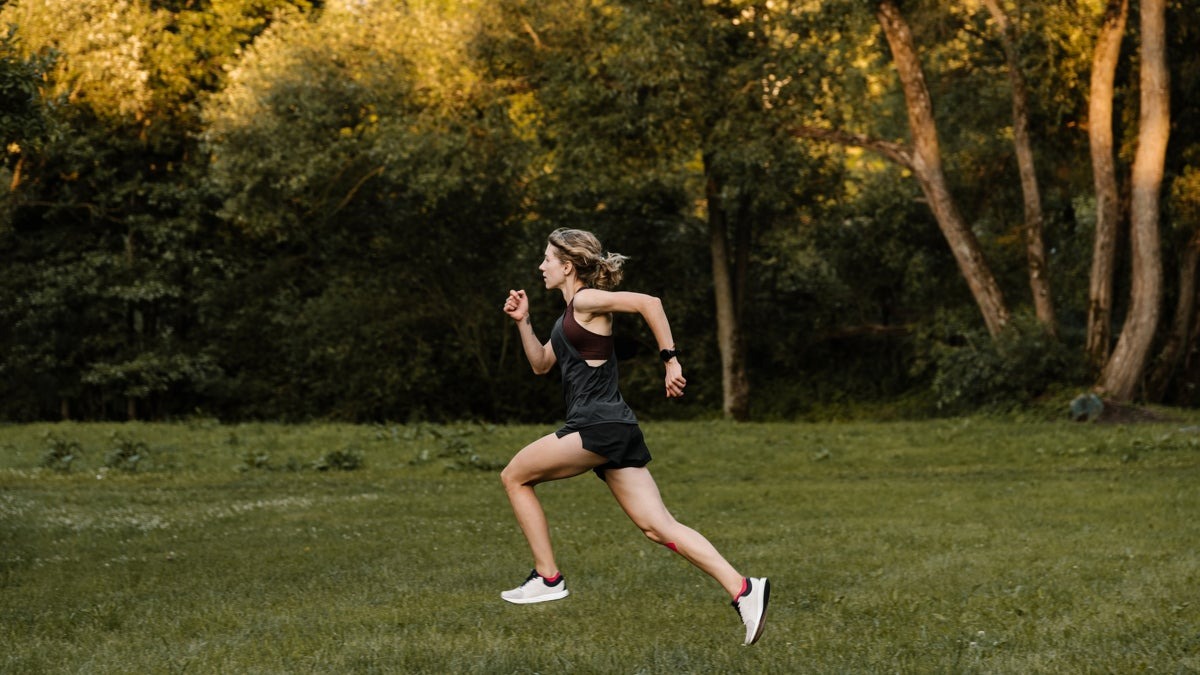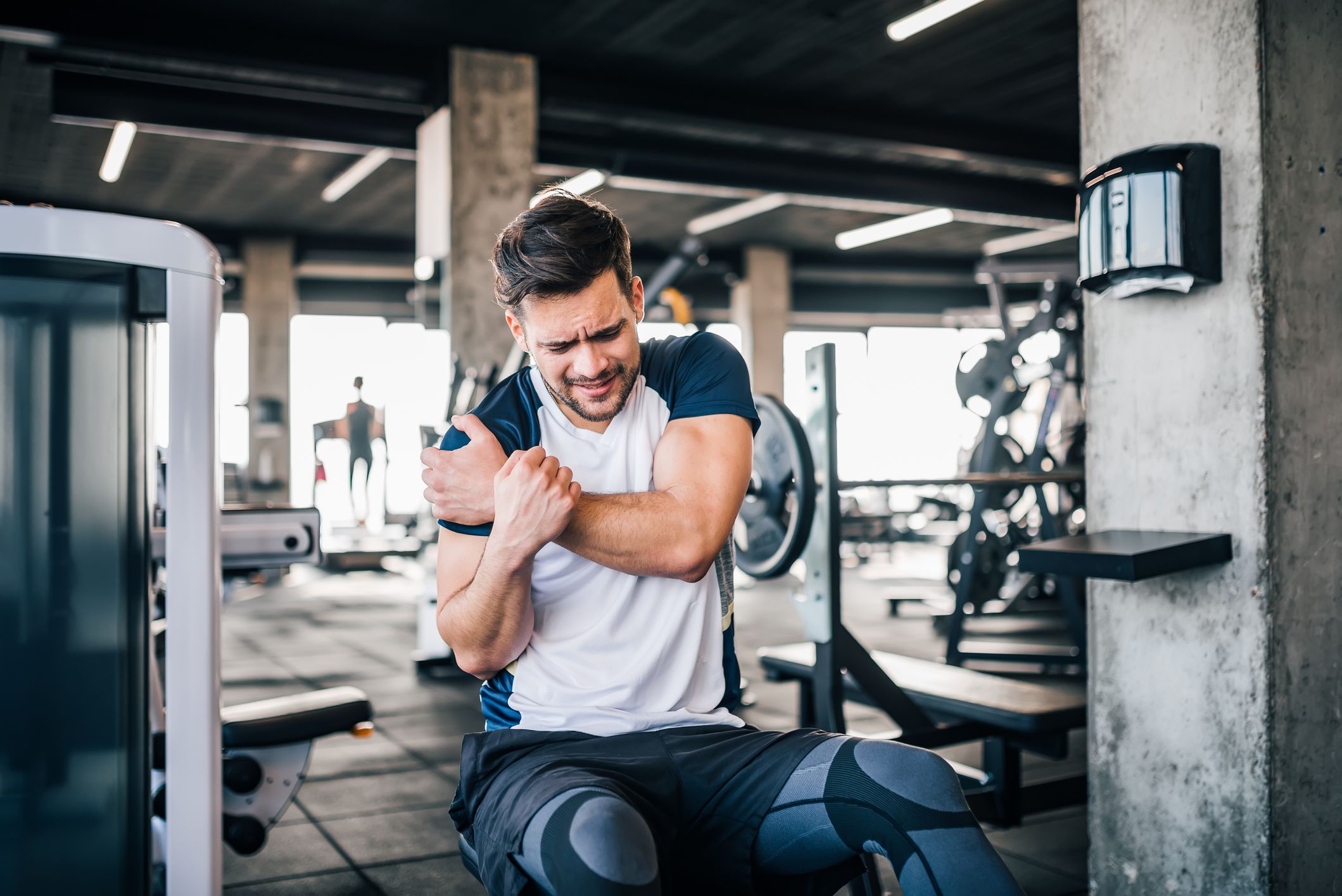

Featured
How To Workout With Bad Knees
Modified: August 21, 2023
Learn how to effectively workout despite having bad knees. Our featured exercises and tips will help you stay active and fit while protecting your knee joints.
Introduction
Exercising is an essential component of a healthy lifestyle, but for those with bad knees, it can be challenging to find workouts that won’t aggravate their condition. Knee issues can range from minor discomfort to chronic pain caused by conditions like osteoarthritis, ligament tears, or tendonitis. These limitations can make it difficult to participate in high-impact activities or perform certain exercises.
The good news is that having bad knees doesn’t mean giving up on fitness altogether. With the right approach and exercises tailored to your needs, you can still maintain an active lifestyle and improve your overall strength and flexibility. By adopting a low-impact workout routine and making modifications when necessary, you can protect your knees while reaping the benefits of regular exercise.
Before diving into a workout routine, it’s crucial to understand the nature of your knee issues. There are various potential causes of knee pain, and each requires a different approach. Consulting with a healthcare professional, such as a physical therapist or orthopedic specialist, is always recommended. They can evaluate your specific condition, provide a diagnosis, and offer guidance on the best exercises for your situation.
In this article, we will explore tips and techniques for working out with bad knees, focusing on low-impact cardio exercises, strengthening exercises for the legs and core, stretching and flexibility exercises for the lower body, and the importance of using proper form and technique. By following these guidelines and exercising caution, you can maintain an active lifestyle and keep your knees happy and healthy.
Understanding Knee Issues
Knee issues can be caused by a variety of factors, including injuries, aging, and chronic conditions. Common knee problems include osteoarthritis, which is the degeneration of the cartilage in the joint, as well as ligament tears, tendonitis, and patellofemoral pain syndrome. These conditions can cause pain, stiffness, swelling, and limited range of motion.
It’s essential to understand the specific nature of your knee problem to determine the best approach to exercising. Different conditions may require different modifications and exercises. Consulting with a healthcare professional is crucial to receive an accurate diagnosis and personalized recommendations.
In addition to seeking medical advice, it can be helpful to educate yourself about your condition. Learn about the anatomy of the knee joint, how it functions, and what factors contribute to your specific issue. This understanding will allow you to make informed decisions and adapt your exercise routine accordingly.
Furthermore, it’s important to listen to your body and be aware of any pain, discomfort, or limitations you may experience during physical activity. If an exercise causes significant pain or worsens your knee symptoms, it’s essential to stop and reassess. Pushing through the pain can lead to further injury and complications. Always prioritize your safety and well-being.
By understanding the nature of your knee issues and educating yourself about your condition, you can make informed decisions when planning your workout routine. With the right knowledge and approach, you can find exercises that minimize stress on your knees while still allowing you to stay active and work towards your fitness goals.
Consulting with a Healthcare Professional
When dealing with knee issues, it is crucial to consult with a healthcare professional before starting any new exercise regimen. They have the expertise and knowledge to provide an accurate diagnosis and tailored recommendations based on your specific condition.
A healthcare professional, such as a physical therapist or orthopedic specialist, will perform a thorough evaluation of your knees and assess your overall physical health. They may order diagnostic tests, such as X-rays or MRIs, to get a clearer picture of the underlying issues.
During the consultation, be prepared to discuss your medical history, including any previous injuries or surgeries, as well as any symptoms or limitations you are experiencing. This information will help the healthcare professional understand the extent of your knee issues and develop a personalized treatment plan.
The healthcare professional can provide you with exercises and modifications that are safe and effective for your specific condition. They will guide you in maintaining proper form and technique during exercises to prevent further damage or discomfort. Additionally, they may recommend other treatments, such as physical therapy, medication, or even surgery, depending on the severity of your knee issues.
Remember, every individual is unique, and what works for one person may not work for another. That’s why seeking professional advice is vital. A healthcare professional can tailor your exercise program to suit your specific needs, gradually increasing the intensity and difficulty as you progress. They can also monitor your progress and make adjustments as necessary to ensure you are achieving the best results while minimizing any risk or discomfort.
By consulting with a healthcare professional, you gain the peace of mind that comes from knowing you are receiving expert guidance. They can provide you with the tools and knowledge you need to work out safely and effectively, taking into account your individual knee issues and overall health.
Tips for Safely Working Out with Bad Knees
Working out with bad knees requires a strategic approach to minimize discomfort and prevent further injury. Here are some tips to help you exercise safely and effectively:
- Warm up: Prior to each workout, it’s important to warm up your muscles and joints to increase blood flow and prepare your body for exercise. Start with some gentle movements, such as marching in place or riding a stationary bike.
- Choose low-impact exercises: Opt for exercises that put minimal stress on your knees. This includes activities like swimming, cycling, using an elliptical machine, or walking on a smooth surface. These exercises provide cardiovascular benefits without placing excessive strain on your joints.
- Modify high-impact exercises: If you enjoy high-impact activities like running or aerobics, consider modifying them to reduce the impact on your knees. For example, replace running with brisk walking, or try low-impact aerobic exercises like dancing or using a mini trampoline.
- Use proper footwear: Invest in supportive athletic shoes that provide cushioning and stability for your feet and knees. Proper footwear helps absorb shock and reduces the strain on your knees during exercise.
- Listen to your body: Pay attention to any pain or discomfort during your workouts. If an exercise causes significant pain, modify or avoid it. It’s important to find a balance between challenging yourself and respecting your body’s limits.
- Gradually increase intensity: Start with low-intensity workouts and gradually increase the intensity and duration over time. This allows your body to adapt and build strength, minimizing the risk of overexertion or injury.
- Incorporate strength training: Strengthening the muscles around your knees can provide added support and stability. Focus on exercises that target the quadriceps, hamstrings, and glutes. Consult with a healthcare professional or a certified trainer to learn proper form and technique.
- Include flexibility exercises: Maintaining flexibility in your lower body can help reduce knee pain and improve range of motion. Stretching exercises such as calf stretches, quad stretches, and hamstring stretches can be beneficial. Remember to perform stretches when your muscles are warm, either during your warm-up or at the end of your workout.
- Consider low-impact alternatives: If certain exercises are causing too much discomfort, explore alternative options. For example, if squats are painful, try using resistance bands or performing wall squats instead.
- Allow for rest and recovery: Rest is an essential part of any workout routine. Give yourself time to recover between workouts and listen to your body’s signals. If you experience prolonged pain or increased discomfort, consult with your healthcare professional.
By following these tips, you can ensure that your workouts are safe and effective, allowing you to maintain an active lifestyle despite having bad knees. Remember, always consult with a healthcare professional before starting any new exercise program and make modifications as necessary to accommodate your individual needs.
Low-Impact Cardio Exercises
Cardiovascular exercise is essential for maintaining a healthy heart and improving overall fitness. For individuals with bad knees, engaging in low-impact cardio exercises is a great way to get the heart pumping without putting excessive stress on the knee joints. Here are some low-impact cardio exercises to consider:
- Swimming: Swimming is a fantastic low-impact exercise that engages multiple muscle groups while providing an excellent cardiovascular workout. Whether it’s freestyle, breaststroke, or water aerobics, swimming allows you to exercise in a weightless environment, reducing strain on your knees.
- Cycling: Cycling is another joint-friendly exercise that can be done outdoors or indoors on a stationary bike. It helps improve cardiovascular health and leg strength while reducing impact on the knees. Start with shorter durations and gradually increase your cycling time as your knees become stronger.
- Elliptical trainer: The elliptical trainer provides a low-impact, full-body workout. It mimics the motion of running without the jarring impact on your knees. Adjust the resistance and incline levels to challenge yourself and vary your workouts. Make sure to maintain proper form, keeping your knees aligned and avoiding excessive strain.
- Brisk walking: Walking is a simple and accessible way to get your heart rate up and burn calories. Find a smooth surface or consider walking on a treadmill with cushioned support. Start with shorter distances and gradually increase your pace and time as your knees tolerate it.
- Rowing: Rowing is a low-impact exercise that engages both your upper and lower body. It provides a great cardiovascular workout while placing minimal stress on the knees. Whether you have access to a rowing machine or prefer to row outdoors in a kayak or canoe, it’s an excellent option for those with bad knees.
- Dancing: Dancing is a fun and enjoyable way to improve cardiovascular fitness. Look for low-impact dance classes like Zumba or ballroom dancing. These activities can help you get your heart rate up, burn calories, and improve coordination while being gentle on your knees.
Remember, while these exercises are considered low-impact, it’s still essential to listen to your body and make modifications as needed. Start with shorter durations and lower intensity levels, gradually increasing as your knees become stronger and more comfortable. If you experience pain or discomfort during any exercise, stop and consult with your healthcare professional.
By incorporating low-impact cardio exercises into your routine, you can improve your cardiovascular health, burn calories, and maintain a healthy weight without putting excessive stress on your knees.
Strengthening Exercises for the Legs and Core
Strengthening the muscles in your legs and core is essential for providing support and stability to your knees. By targeting these muscle groups, you can improve overall knee function and reduce the risk of further injury. Here are some strengthening exercises specifically designed for individuals with bad knees:
- Partial squats: Stand with your feet shoulder-width apart and slowly lower your body into a squatting position, keeping your knees aligned with your toes. Go as far down as you can without experiencing pain, then return to the starting position. Partial squats help strengthen your quads, hamstrings, and glutes while minimizing stress on the knees.
- Step-ups: Find a step or low platform and place one foot on it. Press through the heel of your elevated foot to lift your body onto the step. Step back down and repeat with the opposite foot. Step-ups are an effective way to strengthen your quadriceps and glutes while improving balance.
- Leg extensions: Sit on a chair or bench and extend one leg out in front of you, straightening your knee. Hold for a few seconds and then slowly lower your leg back down. Leg extensions target the quadriceps muscles, helping to build strength and stability in the knee joint.
- Bridges: Lie on your back with your knees bent and feet flat on the floor. Engage your core and push through your heels to lift your hips off the ground, creating a straight line from your shoulders to your knees. Hold for a few seconds, then lower your hips back down. Bridges engage your glutes and hamstrings, helping to stabilize your knees.
- Clamshells: Lie on your side with your knees bent, and stack your hips and shoulders. Keeping your feet together, open your top knee as far as you comfortably can, then return to the starting position. Clamshells target the muscles on the side of your hip and help to improve hip stability, which in turn supports your knees.
- Planks: Get into a push-up position, but with your forearms resting on the ground. Engage your core, keeping your body in a straight line. Hold this position for as long as you can while maintaining proper form. Planks are a great exercise for strengthening your core muscles, which are vital for overall stability.
It’s important to start with light resistance or bodyweight and gradually increase the intensity as your muscles become stronger. Perform these exercises with proper form and technique, and do not push through pain or discomfort. If you experience any pain or new symptoms during exercise, consult with your healthcare professional.
Incorporating strengthening exercises into your workout routine will help build strength and stability in your legs and core, ultimately supporting your knees and reducing the risk of injuries. Take it slow, be consistent, and make adjustments as needed to cater to your individual needs and abilities.
Stretching and Flexibility Exercises for the Lower Body
Stretching and flexibility exercises are crucial for maintaining the health and mobility of your lower body, including your knees. By incorporating these exercises into your routine, you can improve flexibility, reduce muscle tension, and promote better joint function. Here are some effective stretching exercises for the lower body:
- Calf stretches: Stand facing a wall, place your hands on the wall for support, and step one foot back. Keep your back leg straight and press the heel into the ground, feeling a stretch in the calf muscle. Hold for 20-30 seconds and repeat on the other leg. Calf stretches help alleviate tightness in the calf muscles, which can indirectly affect knee function.
- Quadriceps stretches: Stand near a wall or use a chair for balance. Grab your ankle or foot and gently pull it towards your buttocks, feeling a stretch in the front of your thigh. Hold for 20-30 seconds and switch to the other leg. Quadriceps stretches target the large muscles at the front of your thigh and help maintain flexibility in the knee joint.
- Hamstring stretches: Sit on the edge of a chair or bench with one leg extended in front of you. Hinge forward at your hips, reaching towards your toes while keeping your back straight. Hold for 20-30 seconds and repeat on the other leg. Hamstring stretches help improve flexibility in the muscles at the back of your thighs, which can alleviate strain on your knees during movement.
- Hip flexor stretches: Kneel on one knee, while keeping the other foot flat on the ground in front of you. Lean your body forward, feeling a stretch in the front of your hip. Hold for 20-30 seconds and switch to the other leg. Hip flexor stretches help release tension in the muscles at the front of your hip, promoting better alignment and reducing strain on your knees.
- Inner thigh stretches: Sit on the floor and bring the soles of your feet together, allowing your knees to fall out to the sides. Gently press down on your thighs to deepen the stretch. Hold for 20-30 seconds. Inner thigh stretches target the muscles on the inner part of your thighs and can help improve hip mobility and alleviate strain on the knee joints.
- IT band stretches: Stand with feet hip-width apart and cross one leg behind the other. Lean to the side, away from the crossed leg, feeling a stretch along the outer part of your thigh and hip. Hold for 20-30 seconds and repeat on the other side. IT band stretches can help reduce tightness in the iliotibial (IT) band, which runs along the outside of your thigh and can impact knee alignment.
Remember to breathe deeply and hold each stretch without bouncing or forcing yourself into uncomfortable positions. Do not stretch to the point of pain, but rather to a gentle tension. If you feel any sharp or intense pain, stop the stretch immediately.
Incorporating stretching and flexibility exercises into your workout routine can help maintain the health of your lower body, including your knees. By improving flexibility and reducing muscle tightness, you can enhance your range of motion and reduce the risk of knee injuries during physical activity.
Using Proper Form and Technique
Using proper form and technique during exercise is essential for ensuring the safety and effectiveness of your workouts, especially when you have bad knees. Incorrect form can increase the risk of injury and put unnecessary strain on your joints. Here are some important considerations to keep in mind:
- Alignment: Pay attention to your body’s alignment during exercises. Keep your knees in line with your toes and avoid excessive inward or outward movement. This helps maintain proper joint alignment and reduces stress on your knees.
- Neutral spine: For exercises involving the upper body and core, such as planks or rows, focus on maintaining a neutral spine. Avoid rounding or arching your back, as this can place strain on your lower back and indirectly affect your knees.
- Core engagement: Strong core muscles help support your spine and upper body during exercises. Engage your core by pulling your belly button towards your spine, creating a stable and strong center. This reduces the load on your knees and improves overall stability.
- Proper breathing: It’s important to breathe deeply and rhythmically throughout your workouts. Avoid holding your breath or shallow breathing, as it can lead to increased tension and tightness in your muscles. Proper breathing helps to relax your body and maintain focus.
- Gradual progression: When starting a new exercise or increasing the intensity of an existing one, progress gradually. Allow your body time to adapt and get stronger. Jumping into high-impact exercises or heavy weightlifting too quickly can put undue stress on your knees and lead to injury.
- Listen to your body: Pay attention to any pain or discomfort during exercise. If an exercise causes sharp pain, stop immediately and reassess. It’s normal to feel some muscle discomfort during a challenging workout, but sharp or persistent pain in your joints is a red flag that something is wrong.
- Seek guidance: If you’re unsure about the proper form or technique for a specific exercise, consider working with a certified trainer or physical therapist. They can provide expert guidance and ensure you’re performing exercises correctly and safely.
- Cross-training: Incorporating a variety of exercises and activities into your routine can help prevent overuse injuries and provide a well-rounded workout. Mixing different types of exercises, such as cardio, strength training, and flexibility work, ensures that your body is challenged in different ways and helps to protect your knees from excessive strain.
- Rest and recovery: Rest days are just as important as workout days. Allow your body time to recover and repair itself. This includes getting enough quality sleep, fueling your body with nutritious food, and giving your muscles ample time to rest. This will help prevent overuse injuries and allow your knees to recover from exercise.
By focusing on proper form and technique, you can maximize the benefits of your workouts while minimizing the risk of injury to your knees. Pay attention to alignment, engage your core, progress gradually, and listen to your body’s signals. Incorporating these practices into your fitness routine will help keep your workouts safe and effective.
Rest and Recovery
Rest and recovery are crucial aspects of any fitness routine, especially when you have bad knees. Giving your body adequate time to recover is necessary for preventing overuse injuries, minimizing inflammation, and promoting overall wellbeing. Here are some key considerations for incorporating rest and recovery into your workout regimen:
- Balance: Strive for a balance between exercise and rest. Pushing yourself too hard without allowing time for recovery can lead to burnout and increased risk of injury. Plan rest days into your weekly routine to give your body a chance to rejuvenate.
- Quality sleep: Sleep is essential for the body’s healing and recovery processes. Aim for 7-9 hours of quality sleep each night to support muscle repair, hormone balance, and overall cellular regeneration.
- Active recovery: On rest days, consider engaging in low-impact activities such as gentle stretching, yoga, or walking. These activities promote blood flow, which helps deliver nutrients to your muscles and aids in recovery without putting excessive stress on your knees.
- Nutrition: Proper nutrition plays a vital role in recovery. Ensure you’re consuming a well-balanced diet that includes lean proteins, healthy fats, and plenty of fruits and vegetables. Stay hydrated to support joint lubrication and overall tissue health.
- Listen to your body: Pay attention to how your body feels. If you experience persistent pain or increased discomfort in your knees or other joints, it may be a sign that you need additional rest. Be mindful of any signs of overtraining and adjust your workouts accordingly.
- Self-care techniques: Incorporate self-care practices into your routine to support recovery. This can include foam rolling, massage, hot or cold therapy, and relaxation techniques such as meditation or deep breathing exercises. These methods can help reduce muscle tension and promote relaxation.
- Periodization: Consider implementing a periodization training approach, which involves alternating between different phases of intensity and volume in your workouts. This allows for more structured recovery periods and can help prevent overuse injuries while optimizing performance.
- Gradual progression: Gradually increase the intensity, duration, or frequency of your workouts to give your body time to adapt. Avoid sudden spikes in activity that can place excessive strain on your knees and other joints.
- Seek professional advice: If you’re unsure about the appropriate amount of rest and recovery needed for your specific situation, consult with a healthcare professional, physical therapist, or certified trainer. They can provide tailored recommendations based on your individual needs and goals.
Remember that rest and recovery are not signs of weakness but rather essential components of a well-rounded fitness routine. By prioritizing rest, you allow your body to recharge, repair, and become stronger over time. Embrace rest days as an integral part of your overall fitness journey, and your knees will thank you for it.
Conclusion
Working out with bad knees may present some challenges, but by following the tips and guidelines outlined in this article, you can still maintain an active and healthy lifestyle. Understanding your knee issues, consulting with a healthcare professional, and using proper form and technique are vital for exercising safely and effectively.
It’s important to incorporate low-impact cardio exercises, such as swimming and cycling, to keep your heart healthy without putting excessive stress on your knees. Strengthening exercises for the legs and core, along with flexibility exercises for the lower body, can help improve stability and reduce the risk of injuries.
Additionally, listening to your body, allowing for rest and recovery, and seeking professional advice when needed are key components of a successful fitness routine. Remember to progress gradually and make modifications as necessary to accommodate your individual needs and limitations.
By taking these steps, you can work out safely and effectively, protecting your knees and promoting overall health and wellbeing. So, get started, stay consistent, and enjoy the benefits of regular physical activity, even with bad knees!









